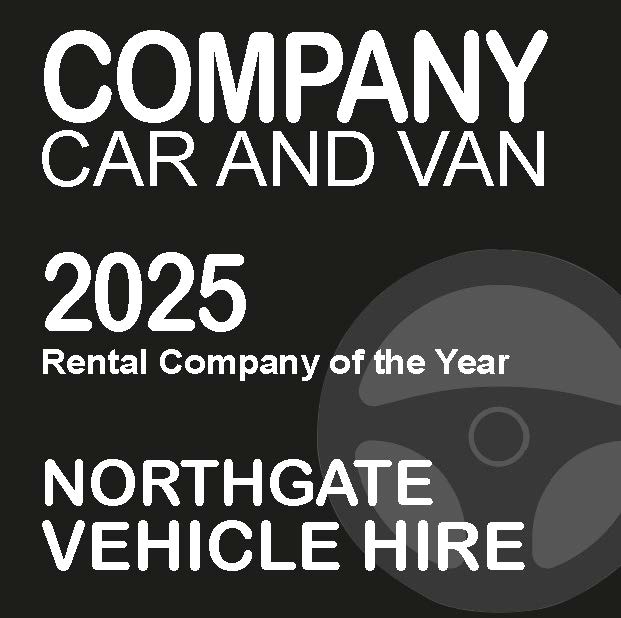Understanding CO2 Emissions and the Path to Carbon Neutrality in UK Freight
![]() 20/12/2024
20/12/2024![]() 8 minutes read
8 minutes read
Last reviewed: 10/08/2025
Northgate Vehicle Hire has analysed government data to uncover key insights on CO₂ emissions across the UK from light and heavy goods vehicles (LGV and HGV). With the transport sector undergoing a green revolution, it’s crucial to understand how local areas are performing in the race to net zero emissions.
Our analysis highlights regional disparities in CO₂ emissions and outlines the number of electric vans (EVs) required for each area to achieve carbon neutrality in freight transport.
Key Findings
Based on our research, we found significant regional differences in CO₂ emissions from light goods vehicles (LGVs) and heavy goods vehicles (HGVs). For instance, Southeast England emitted approximately 6.5 billion tons of CO₂, while all of Wales produced just 2.07 billion tons in comparison.
Using the CO₂ emissions data for each area, we calculated the number of electric vans needed for each region and city to achieve CO₂ neutrality for LGV and HGV freight.
Wales
In 2023, freight transport in Wales, primarily through Light Goods Vehicles (LGVs) and Heavy Goods Vehicles (HGVs), generated approximately 2.07 billion tons of CO₂ emissions. To offset these emissions, Wales would need around 138 electric vans in operation.
Scotland
In 2023, LGVs and HGVs in Scotland emitted around 4.1 billion tons of CO₂. To reach carbon neutrality, Scotland would need approximately 275 electric vans in operation.
Northeast England
In 2023, LGVs and HGVs in Northeast England produced around 1.4 billion tons of CO₂. Achieving carbon neutrality in the region would require deploying approximately 91 electric vans.
Northwest England
Freight transport from LGVs and HGVs in Northwest England generated about 4.7 billion tons of CO₂ emissions in 2023. Offsetting this amount would require the region to deploy roughly 312 electric vans.
East Midlands
Freight transport in the East Midlands produced an estimated 4.4 billion tons of CO₂ in 2022 from LGVs and HGVs. Offsetting this level of emissions would require around 292 electric vans in the region.
Yorkshire and the Humber
In 2023, freight activities from LGVs and HGVs in Yorkshire and the Humber produced approximately 4.2 billion tons of CO₂. Offsetting these emissions would necessitate the deployment of about 282 electric vans across the region.
West Midlands
In 2023, freight transport in the West Midlands generated roughly 4.6 billion tons of CO₂ from LGVs and HGVs. To neutralise these emissions, the region would need approximately 307 electric vans.
East of England
Freight activities from LGVs and HGVs in the East of England resulted in approximately 5.4 billion tons of CO₂ emissions in 2023. Offsetting this would require around 358 electric vans in the region.
Inner London
In 2023, freight transport in Inner London produced about 646 million tons of CO₂ from LGVs and HGVs. To counterbalance these emissions, the area would need approximately 43 electric vans in operation.
Outer London
Freight transport in Outer London generated approximately 1.5 billion tons of CO₂ in 2023 from LGVs and HGVs. To balance out these emissions, the area would need to deploy roughly 102 electric vans.
Southeast England
In 2023, freight activities in Southeast England resulted in approximately 6.5 billion tons of CO₂ emissions from LGVs and HGVs. To mitigate these emissions, the region would need to utilise around 432 electric vans.
Southwest England
In 2023, freight transport in Southwest England emitted approximately 4 billion tons of CO₂ from LGVs and HGVs. To reduce this impact, the region would need to implement around 270 electric vans.
Northern Ireland
In 2023, Light Goods Vehicles and Heavy Goods Vehicles in Northern Ireland generated approximately 979 million tons of CO₂. To lessen this impact, the region would require around 65 electric vans.
The Road Ahead for the UK
As the UK government pushes for a zero-emissions future, adopting electric vans and trucks is a critical step. By understanding regional differences in emissions and the specific needs of each area, local authorities and businesses can better plan for the transition to a green, sustainable freight transport system.
Northgate Vehicle Hire is committed to supporting the journey toward carbon neutrality by providing flexible, cost-effective EV van hire solutions tailored to your business needs.
For more details on how Northgate can help your business reduce its environmental impact, take a look at our guide on how you can transition your fleet to EVs.
Methodology
This analysis is based on data from various official UK government sources, with a focus on CO₂ emissions in the freight transport sector for light goods vehicles (LGVs) and heavy goods vehicles (HGVs). Key metrics include:
- Thousand Tonnes of Oil Equivalent (ktoe): Energy consumption from LGV and HGV freight transport in different regions of the UK, converted to kilowatt-hours (kWh). We used data from this source: https://www.gov.uk/government/statistics/uk-road-transport-energy-consumption-at-regional-and-local-authority-level-2005-to-2023 and converted the data to KwH using this converter: https://www.unitjuggler.com/convert-energy-from-ktoe-to-kWh.html.
- CO₂ Emissions (Metric Tons): Calculated based on energy consumption in each region. The data includes both LGV and HGV emissions for 2022. Source used to convert KwH to CO₂: https://ctprodstorageaccountp.blob.core.windows.net/prod-drupal-files/documents/resource/public/Conversion_factor_introductory_guide.pdf
- EV Vans Required: To estimate the number of electric vans needed to offset CO₂ emissions, we calculated the CO₂ output from freight transport and used the average CO₂ savings from switching to electric vans based on this source: https://www.webfleet.com/en_gb/webfleet/blog/electrifying-data-cutting-carbon-with-evs/
The analysis considers regional variations and uses government benchmarks to estimate the impact of electrifying freight transport. This approach allows us to provide actionable insights for businesses and local authorities seeking to reduce their carbon footprint through EV adoption.






